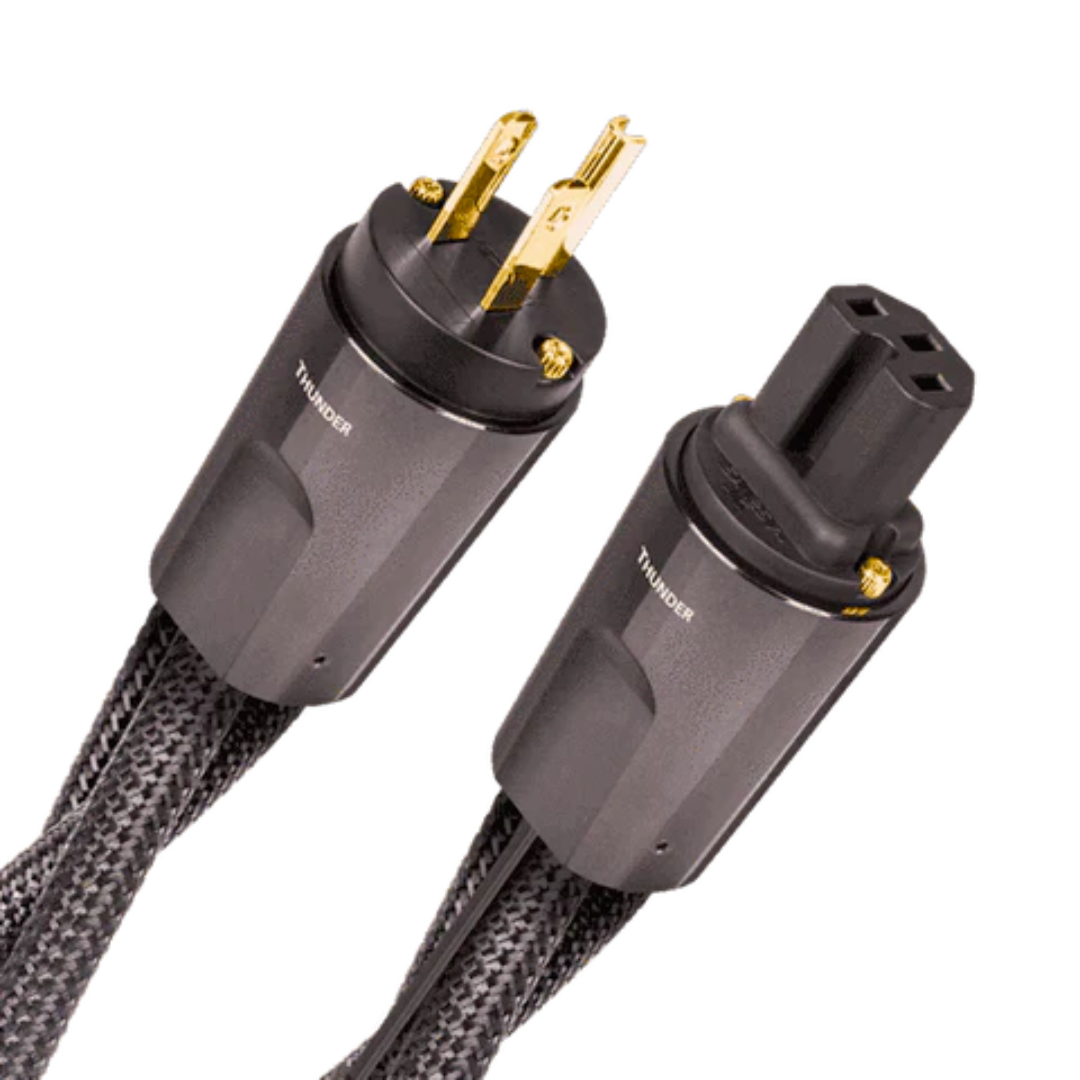- HIGH PURITY CONDUCTORS - LONG-GRAIN COPPER (LGC) AND PERFECT-SURFACE COPPER (PSC)
A carefully finessed combination of solid high-purity Long-Grain Copper (LGC) and high-purity Perfect-Surface Copper (PSC) conductors prevent strand interaction, a major source of ear fatiguing transient intermodulation distortion. LGC allows a smoother and clearer sound than standard OFHC (Oxygen-Free-High-Conductivity) copper. The astonishingly smooth and pure Perfect-Surface Copper further eliminates harshness and greatly increases clarity compared to OFHC, OCC, 8N and other premium coppers.
- RF/ND-TECH (PATENTED RADIO-FREQUENCY GROUND-NOISE DISSIPATION) MINIMIZES CIRCUIT MISBEHAVIOR BY CANCELLING INDUCED RF NOISE
AC Ground wires may provide protection from an electrical short circuit, but they also act as an antenna. Thus, they are subject to induced radio-frequency (RF) noise. This RF noise bypasses component power supplies and is typically coupled directly into a system’s most sensitive audio/video circuits. AudioQuest’s RF/ND-Tech greatly reduces this distortion, yielding unprecedented levels of noise dissipation across the widest bandwidth (range) of radio frequencies possible. Our unique circuit topology uses a common-mode phase-cancelling array, in concert with proprietary dielectric materials which provide additional differential linear filtering. US Patent # 8,988,168.
- UNCOMPRESSED HIGH (VARIABLE) CURRENT TRANSFER - THUNDER
With current capacity of 20 amps RMS @ 125VAC 50/60Hz (16 amps RMS @ 220-240VA 50/60Hz), Thunder/High (Variable) Current can withstand current transient peaks many times its continuous (average) RMS rating. This makes Thunder/High (Variable) Current ideally suited for a wide assortment of AC power conditioners, power regenerators, AC isolation transformers, and AC battery back-up devices, as well as any power amplifier, powered subwoofer, powered loudspeaker, powered receiver, or integrated amplifier.
- 72v Dielectric-Bias System (DBS)
Insulation is also a dielectric that can act like a shunt-filter. Biasing minimizes dielectric-noise and linearizes the filter, significantly improving wide-bandwidth dissipation of induced RF noise.
- DIRECTIONALITY
All drawn metal strands or conductors have a non-symmetrical, and therefore directional, grain structure. AudioQuest controls the resulting RF impedance variation so that noise is drained away from where it will cause distortion. The correct direction is determined by listening to every batch of metal conductors used in every AudioQuest audio cable. When applicable, arrows are clearly marked on the connectors to ensure superior sound quality. For most models of AQ cable, the arrows not only indicate the direction that optimizes metal-directionality as part of Noise-Dissipation, but also indicates non-symmetrical attachment of shield and GND in order to optimize full-system performance.


